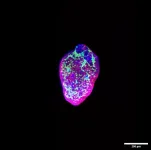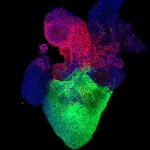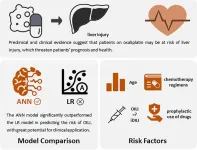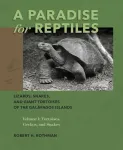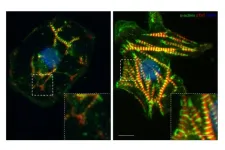(Press-News.org) An advanced human heart organoid system can be used to model embryonic heart development under pregestational diabetes-like conditions, researchers report February 8 in the journal Stem Cell Reports. The organoids recapitulate hallmarks of pregestational diabetes-induced congenital heart disease found in mice and humans. The findings also showed that endoplasmic reticulum (ER) stress and lipid imbalance are critical factors contributing to these disorders, which could be ameliorated with exposure to omega-3s.
“The new stem cell-based organoid technology employed will enable physiologically relevant studies in humans, allowing us to bypass animal models and obtain more information about relevant disease mechanisms, accelerating drug discovery and medical translation,” says senior study author Aitor Aguirre of Michigan State University.
Congenital heart disease is the most common type of congenital defect in humans. Pregestational diabetes -- diabetes affecting the mother before and during the first trimester of pregnancy -- is an important factor contributing to congenital heart disease and is present in a significant, growing population of diabetic female patients of reproductive age. Newborns from mothers with pregestational diabetes can have up to a 12-fold increased risk of congenital heart disease. Unfortunately, pregestational diabetes is hard to manage clinically due to the sensitivity of the developing embryo to glucose oscillations, and it represents a critical health problem for the mother and the fetus.
The limited access to human tissues for research of early-stage disease has resulted in an overreliance on animal models. But it remains unclear to what extent rodent models recapitulate abnormalities present in humans, given critical species differences in heart size, cardiac physiology, electrophysiology, and bioenergetics. In addition, rodent models and many in vitro cell models rely on aggressive diabetic conditions, leading to exaggerated features that may not be clinically relevant.
“Advances in biotechnology and bioengineering are enabling the creation of human mini-organs in vitro,” Aguirre says. “These mini-organs can currently be used to understand human disease much better without the drawbacks of animal models.”
In the new study, Aguirre and his team used an advanced heart organoid model derived from human pluripotent stem cells. This model recapitulates human heart development during the first trimester, including critical steps such as chamber formation, vascularization, cardiac tissue organization, and relevant cardiac cell types. To specifically model the effects of pregestational diabetes, the researchers modified culture conditions to accurately reflect reported physiological levels of glucose and insulin in patients.
The resulting pregestational diabetes heart organoids (PGDHOs) developed features observed in previous mouse and human studies. For example, the diabetic human heart organoids were larger, suggesting signs of cardiac hypertrophy -- a first hallmark of maternal pregestational diabetes. This observation was confirmed by studying cardiomyocyte size. The PGDHOs also displayed arrythmias and a reduction in beat frequency, which has been observed in neonatal rats from diabetic mothers. In addition, single-cell transcriptomic analysis of PGDHOs revealed a reduction in cardiomyocyte numbers, a significant expansion of tissue on the outer surface of the heart, and the absence of a well-developed vasculature at early developmental stages.
The PGDHOs also exhibited increased accumulation of reactive oxygen species (ROS), revealing increased oxidative stress and mitochondrial swelling -- also hallmarks of diabetic embryonic heart conditions. A significant portion of ROS was localized to the ER and could be impairing its function, leading to a condition known as ER stress. Moreover, the PGDHOs revealed a clear imbalance in very long chain fatty acids, particularly affecting omega-3 polyunsaturated fatty acids, which are mostly synthesized in the ER. Taken together, these results point to a major ER-induced lipid imbalance in PGDHOs. This imbalance is linked to the degradation of fatty acid desaturase 2 (FADS2) -- a key lipid biosynthesis enzyme presents in the ER -- by the IRE1-dependent mRNA decay (RIDD) pathway, which has been implicated in several other cardiac conditions.
In an attempt to remedy the effects of ER stress, the researchers tested several potentially therapeutic compounds on PGDHOs. A mixture of omega-3 fatty acids ameliorated diabetic features, while targeting inositol-requiring enzyme 1 (IRE1) reduced cardiomyocyte hypertrophy. All the compounds also restored FADS2 levels.
“The organoids still lack some features that could be important, such as external vascularization and outflow tract, and better chamber formation, so we might still be missing important aspects of congenital heart disease and diabetic cardiomyopathy,” Aguirre says. “On one hand, we want to partner with clinicians to establish the efficacy and safety of our findings in pregnant women. On the other hand, we want to apply our organoid model to other conditions affecting congenital heart disease so we can improve the lives of these children in the future.”
###
This research was supported by the National Institutes of Health, the National Science Foundation, the Michigan Diabetes Research Center, the University of Michigan, the American Heart Association and the Spectrum-MSU Alliance Foundation.
Stem Cell Reports, Kostina and Lewis-Israeli et al.: “ER stress and lipid imbalance drive diabetic embryonic cardiomyopathy in an organoid model of human heart development.” https://www.cell.com/stem-cell-reports/fulltext/S2213-6711(24)00006-7
Stem Cell Reports (@stemcellreports), published by Cell Press for the International Society for Stem Cell Research (@ISSCR), is a monthly open-access forum communicating basic discoveries in stem cell research, in addition to translational and clinical studies. The journal focuses on shorter, single-point manuscripts that report original research with conceptual or practical advances that are of broad interest to stem cell biologists and clinicians. Visit http://www.cell.com/stem-cell-reports. To receive Cell Press media alerts, please contact press@cell.com.
END
PITTSBURGH, Feb. 8, 2024 — In a new study of nasal decongestant purchasing patterns, researchers at the University of Pittsburgh School of Medicine found that phenylephrine remained the most popular choice year after year, despite decades of concerns over a lack of evidence supporting its effectiveness.
Published today in JAMA, the research letter points to a coming wave of supplychain disturbances if the Food and Drug Administration (FDA) moves to pull oral phenylephrine from the shelves, as recommended by an FDA advisory panel in 2023 that found the medication ineffective.
The researchers ...
About The Study: Despite a lack of clinical efficacy evidence, phenylephrine was the most common oral decongestant in the U.S. from 2012-2021, with hundreds of millions of units purchased by retail pharmacies annually, and sales remained stable during this time. In contrast to pseudoephedrine, which is often formulated as a stand-alone product, most phenylephrine products were co-formulated with antihistamines or antitussives, which are likely to provide some symptom relief for cough and cold symptoms.
Authors: Timothy S. Anderson, M.D., M.A.S., of the University of Pittsburgh, is the corresponding author.
To access the embargoed study: Visit our For The Media website at ...
About The Study: The results of this study demonstrated that home environment features, particularly lighting, may influence home activity metrics in older adults with visual impairment. Further prospective studies would be needed to confirm if home modifications can improve at-home activity.
Authors: Pradeep Y. Ramulu, M.D., M.H.S., Ph.D., of the Johns Hopkins University School of Medicine in Baltimore, is the corresponding author.
To access the embargoed study: Visit our For The Media website at this link https://media.jamanetwork.com/
(doi:10.1001/jamaophthalmol.2023.6436)
Editor’s Note: Please see the article for additional ...
BOSTON – The vast majority of liver transplant centers in the United States use language on their websites that can be considered stigmatizing through their use of words like “alcoholism,” “alcoholic” and “alcohol abuse,’ potentially hindering care and the willingness of patients to seek treatment, a study by Massachusetts General Hospital (MGH) has found.
In highlighting a significant gap between that online usage and the practice recommendations of medical ...
One of the country’s best-known science museums, San Francisco’s Exploratorium, is located less than three miles north of Gladstone Institutes—a proximity that has resulted in creative, high-science collaborations like the permanent exhibit featured in the latest issue of Stem Cell Reports.
Among the museum’s most popular exhibits, “Give Heart Cells A Beat” opens a rare window into the microscopic world of the beating human heart, using technology and materials made ...
Since 2004, several clinical studies have reported that patients with OXA frequently experienced adverse effects of liver injury (LI), typically characterized by hepatic sinusoidal injury, splenomegaly, decreased platelet count and noncirrhotic portal hypertension, which can progress to nodular regenerative hyperplasia with long-term treatment. LI also decreased hepatic functional reserve and aggravated the postoperative course of colorectal cancer patients after hepatectomy, and may affect intraoperative bleeding, postoperative morbidity, and overall survival. LI can ...
Natural scientist and author Robert Rothman takes readers on a reptillian tour of the Galápagos Islands in his new book, A Paradise for Reptiles: Lizards, Snakes, and Giant Tortoises of the Galápagos Islands Vol. 1: Tortoises, Geckos, and Snakes, published by RIT Press.
For more than 30 years, Rothman has led hundreds of Rochester Institute of Technology students on tours to the Galápagos Islands to observe the wildlife and landscape that inspired Charles Darwin’s theory of evolution by natural selection. Rothman’s A Paradise for Reptiles, an homage to the 19th century scientist, is an accessibly written guide for anyone interested in Darwin, the Galápagos, ...
Language use in social media can be a useful tool for social scientists, because it reflects living conditions in areas the posts originate from.
“There is a correlation between social inequalities and language patterns in social media,” says Associate Professor Lucas M. Bietti at the Norwegian University of Science and Technology (NTNU’s) Department of Psychology.
Researchers studied 30 million X/Twitter posts from the United States. They compared the language used in the tweets to the living conditions in the counties from which the ...
For some leukemia patients, the only potential chemotherapy option is a drug that also carries a high risk of heart failure. This means that some patients who recover from their cancer will end up dying of heart disease brought on by the cure.
In a new study, researchers from the University of Illinois Chicago and other universities have identified mechanisms that cause the drug, ponatinib, to harm the heart. They also identified a promising treatment that could reverse this process. The paper, with senior author Sang Ging Ong, assistant professor of pharmacology and medicine at UIC, is published in Circulation Research. The study is part of a growing field called cardio-oncology ...
UC Riverside scientists have discovered a tiny worm species that infects and kills insects. These worms, called nematodes, could control crop pests in warm, humid places where other beneficial nematodes are currently unable to thrive.
This new species is a member of a family of nematodes called Steinernema that have long been used in agriculture to control insect parasites without pesticides. Steinernema are not harmful to humans or other mammals and were first discovered in the 1920s.
“We spray trillions of them on crops every year, and they’re ...
